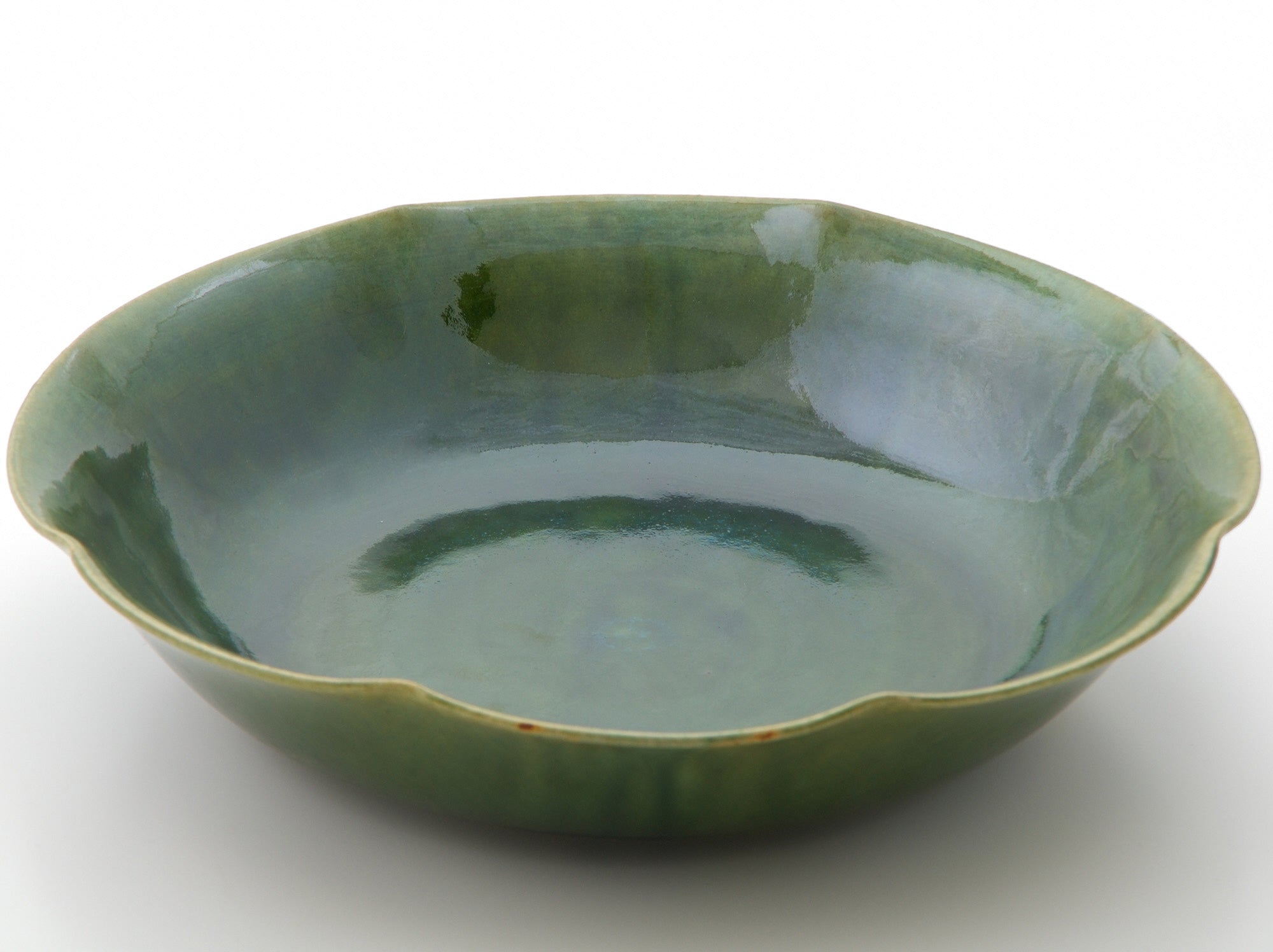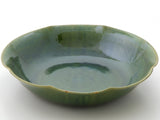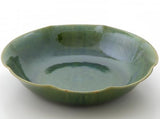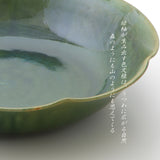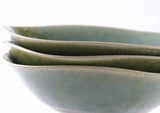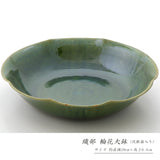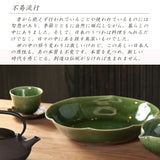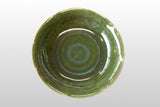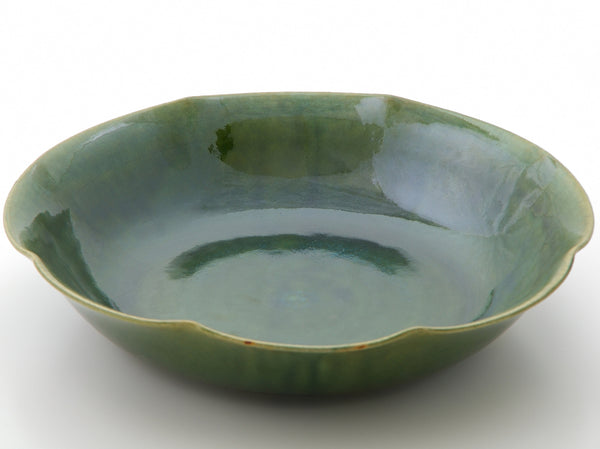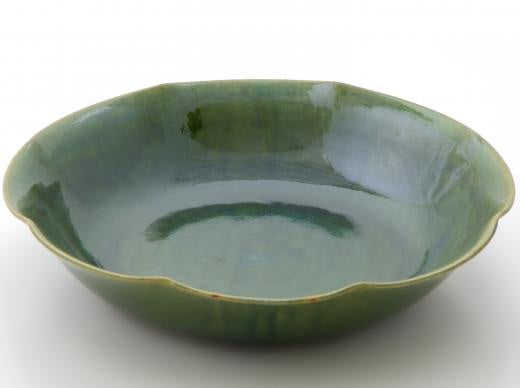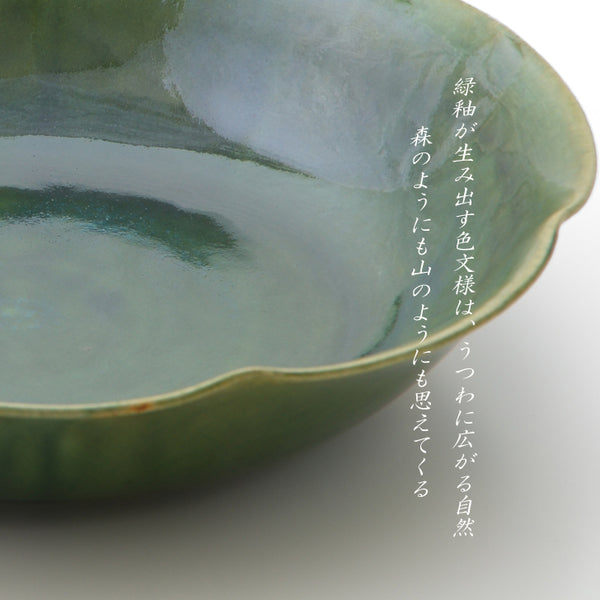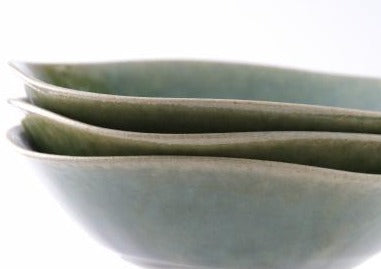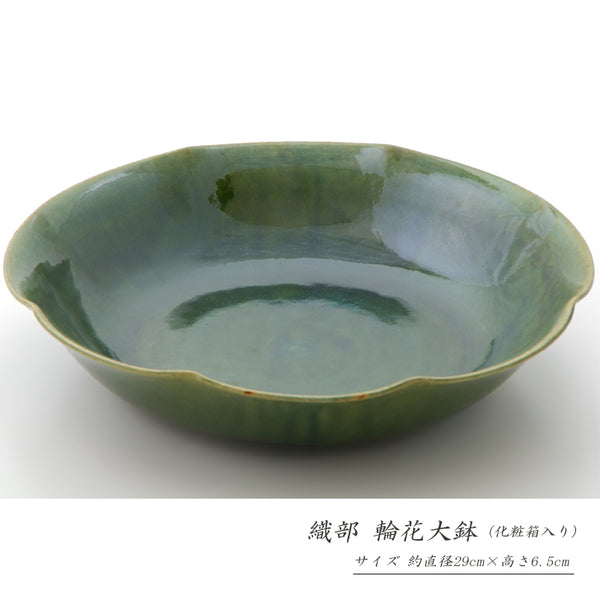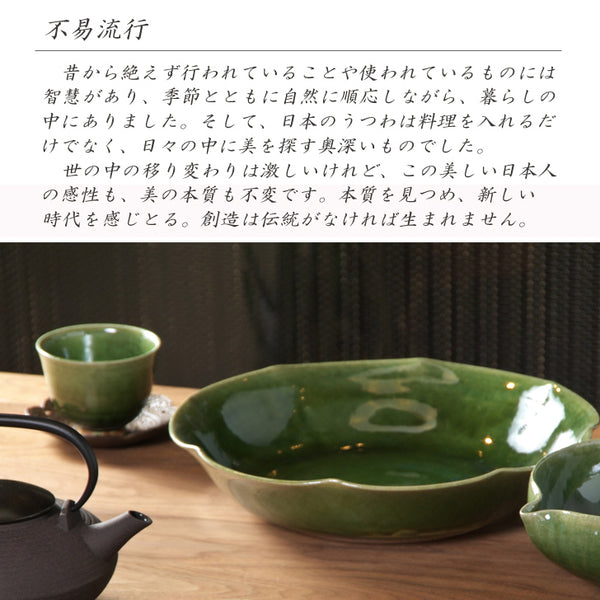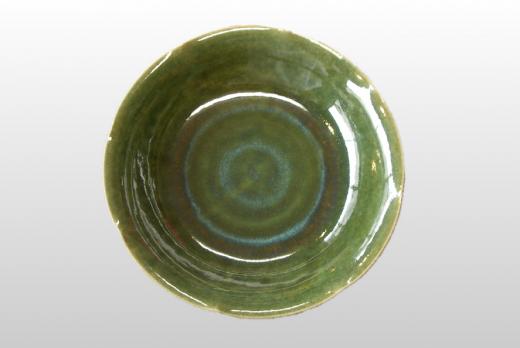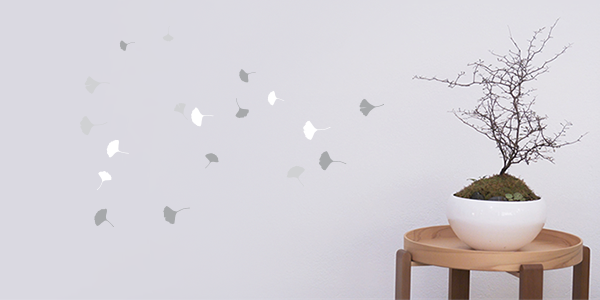Oribe Rinka Flower Petals Bowl by Fudogama
Oribe Rinka Flower Petals Bowl by Fudogama
This bowl is a timeless piece expressing the signature Oribe deep green glaze. The natural green gradient tone of this Oribe vessel is ideal for entertaining. This serving bowl has the mysteriously deep green glaze with dark and light spots, inspiring you of universe. The nuances in colour are unique to each plate and reflect the wabi-sabi inherent in great works of traditional Japanese pottery.
This bowl reflects the traditional techniques preserved by Mino potters and free-spirited creativity representing the Momoyama period.
Fudogama modestly attempt to express the identity of their products in their universal beauty, by eliminating excessive decoration.
Since each item is handmade, there will be slight differences in colour, shape and thickness.
Size: D 29 cm x H 6.5cm
Material: Clay with Oribe Glaze
Made by Fudogama in Gifu, Japan
Care Instructions
Not microwave or dishwasher safe.
Do use on direct heat or flame. Avoid any sharp temperature change on the product, as it could cause cracking.
Do not freeze the product, as it might crack.
Fudogama is a small family-owned studio, situated in Toki, the heart of historic Mino-yaki pottery area in Gifu Prefecture. One of the specialties of Fudogama is Oribe style Mino-yaki earthenware, characterized by its iconic deep green glaze.
Mino-yaki Earthenware and Oribe Style
Mino-yaki earthenware is specialty pottery produced in the Mino area of Gifu prefecture which began in the 7th century. Mino-yaki continues to adapt to modern lifestyles while preserving its history and tradition. One of the signature characteristics of Mino-yaki earthenware is its diversity. Mino-yaki does not adhere to a single form, as it has over 15 registered types of traditional handicraft in Japan. The best-known form is Oribe Ware, which was created by Oribe Furuta, a disciple of the influential tea ceremony master, Sen no Rikyu, at the beginning of the Edo Period in the 17th century.

